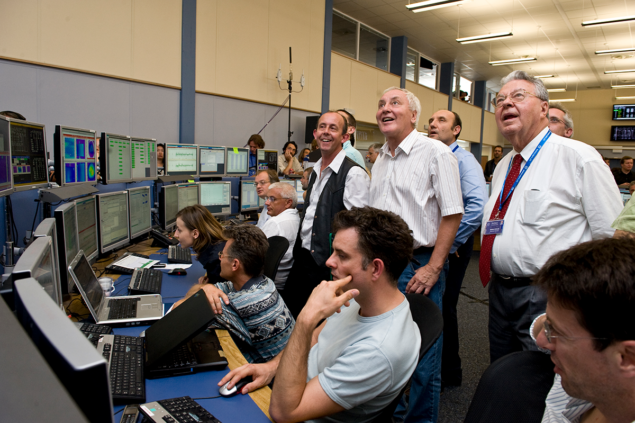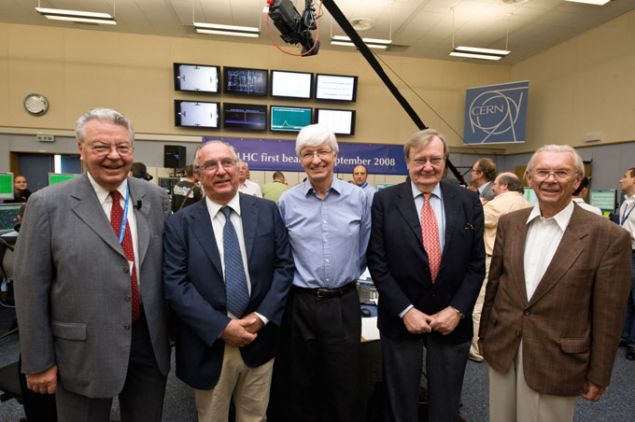At 10.28 am on 10 September, the first beam made the full 27 km journey around the LHC, travelling in a clockwise direction. Cheers and applause filled the CERN Control Centre (CCC) as two spots appeared on the screen, indicating that the beam had completed the full circle, from injection at Point 2 round to the same point. The emotion was echoed around CERN where staff and users had been watching events unfold via screens in the main auditorium and elsewhere, as well as in the control rooms of the LHC experiments. Also keenly watching the action were some 250 journalists attending the event, many in the Globe of Science and Innovation.

It had taken the operations team in the CCC, just less than an hour to allow the beam to progress carefully, through one sector at a time. Finally, the beam made three circuits before the team decided to take a well-earned pause before starting the procedures for the beam travelling in the opposite direction. Then in the afternoon, again taking about one hour for the complete journey sector-by-sector, the first beam travelled anticlockwise all the way from injection at Point 7, finally making a total of two circuits.
Present in the crowd in the CCC, were all the directors-general of CERN who had watched over the proposals, approval and construction of the LHC. Herwig Schopper (1981–1988) had overseen the construction of the LEP collider, with its 27 km tunnel that the LHC now occupies; Carlo Rubbia had been a tireless and inspirational advocate for the machine (1989–1993); Chris Llewellyn Smith (1994–1998) had conducted the hard negotiations that led to the project’s approval in 1996; Luciano Maiani (1999–2003) was at the helm as major construction got under way; and Robert Aymar, the current director-general, has seen the project to its successful completion. The crowd also included Giorgi Brianti, the “father” of the machine with its unique twin-aperture, two-in-one magnet system.

Only very careful planning and preparatory work had made it possible for the Operations Team to be able to propose starting up the machine under the eyes of the world’s media. Although common practice for the launch of space vehicles, for example, this was a “first” in the world of particle physics – and not without additional stress for the operators. From 9.00 am to 6.00 pm at CERN, regular live action from the CCC was broadcast by many TV channels. The journalists in the Globe were also able to attend a press conference in the afternoon, given by the current director-general, together with Llewellyn Smith, Rubbia, Schopper, Brianti, Evans, and Jos Engelen, CERN’S Chief Scientific Officer.
The sight of first beam marks the end of a long journey for the LHC project, from the first proposals in 1984 to the final hardware commissioning this past summer. It is also the first step in the process of bringing the LHC into operation. The next stage for the operations team will be to establish beams that circulate continuously, for hours at a time. The final step will be to commission the LHC’s acceleration system to boost the energy to 5 TeV per beam – the target energy for 2008, which will be a world record energy and another “first” for CERN.








